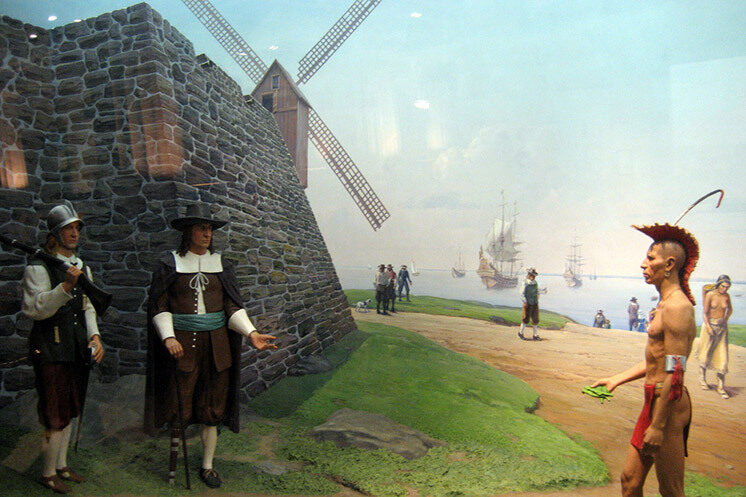Why Teach About Native Peoples of the Chesapeake?

Native Americans were the earliest inhabitants of the Chesapeake Bay and helped to shape the region we now reside in. There is not a significant written history of the Chesapeake’s native peoples, but artifacts left behind can teach us a lot about the land, water and way of life back then.
A big principle in Native American life was living in balance with nature and the environment. The people knew how to keep the area pristine and sustainable, while also living off of the land. The issues associated with massive development as we know it today were unheard of at that time.
Written accounts of Chesapeake natives begin around 1607, when Captain John Smith began his exploration of the Bay, mapping and journaling his experiences along the way. Unfortunately, with the arrival of European settlers and colonists, many of the native peoples of the Chesapeake were faced with disease as well as violence. The once-thriving population of Native Americans in the Chesapeake region rapidly decreased.
Of the different native peoples, the region’s most predominant were the Powhatan, Nanticoke and Piscataway nations. The communities were organized under chiefdoms, a sophisticated and multi-layered system of government. They practiced diplomacy and developed political and military alliances. They were deeply spiritual and expressed their religious values and beliefs in cyclical ceremonies and rituals that kept their world in balance.
They saw this taken advantage of when the Europeans began settling in the area, and those that have survived have seen the landscape change drastically since their ancestors first inhabited the area all those years ago.
Through the study of Native American artifacts in the Chesapeake Bay watershed, you and your students can begin a meaningful discussion of the ways the land has changed: how we use it, how we live off of it and how we respect it. Issues such as development, pollution, wildlife, sustainability, public access to waterways, and shoreline conservation are all likely to lead to some thoughtful discussions with older students.
Efforts to protect the Bay can also be applied to the Native peoples of the Chesapeake, because many of the measures being taken to conserve and protect land along the shores from development will help maintain the integrity of any artifacts that may be found in those areas.
In order to fully understand the Chesapeake Bay’s struggles in the present and the future, it is important to understand its history, a huge part of which was formed by the Native peoples of the region. Use some of these great resources to get the conversation started with your students and help the history of our native people live on.
Additional Resources:
- Native American Resources – Bay Backpack
- Native Americans of the Chesapeake Bay: Using Primary and Secondary Sources - Captain John Smith 400 Project
- We Have a Story to Tell: Native Peoples of the Chesapeake Region (Curriculum Guide) - Smithsonian National Museum of the American Indian
- America in 1607: Jamestown and the Powhatan – National Geographic interactive website
- Pocahontas: Ambassador to the New World – A&E
